
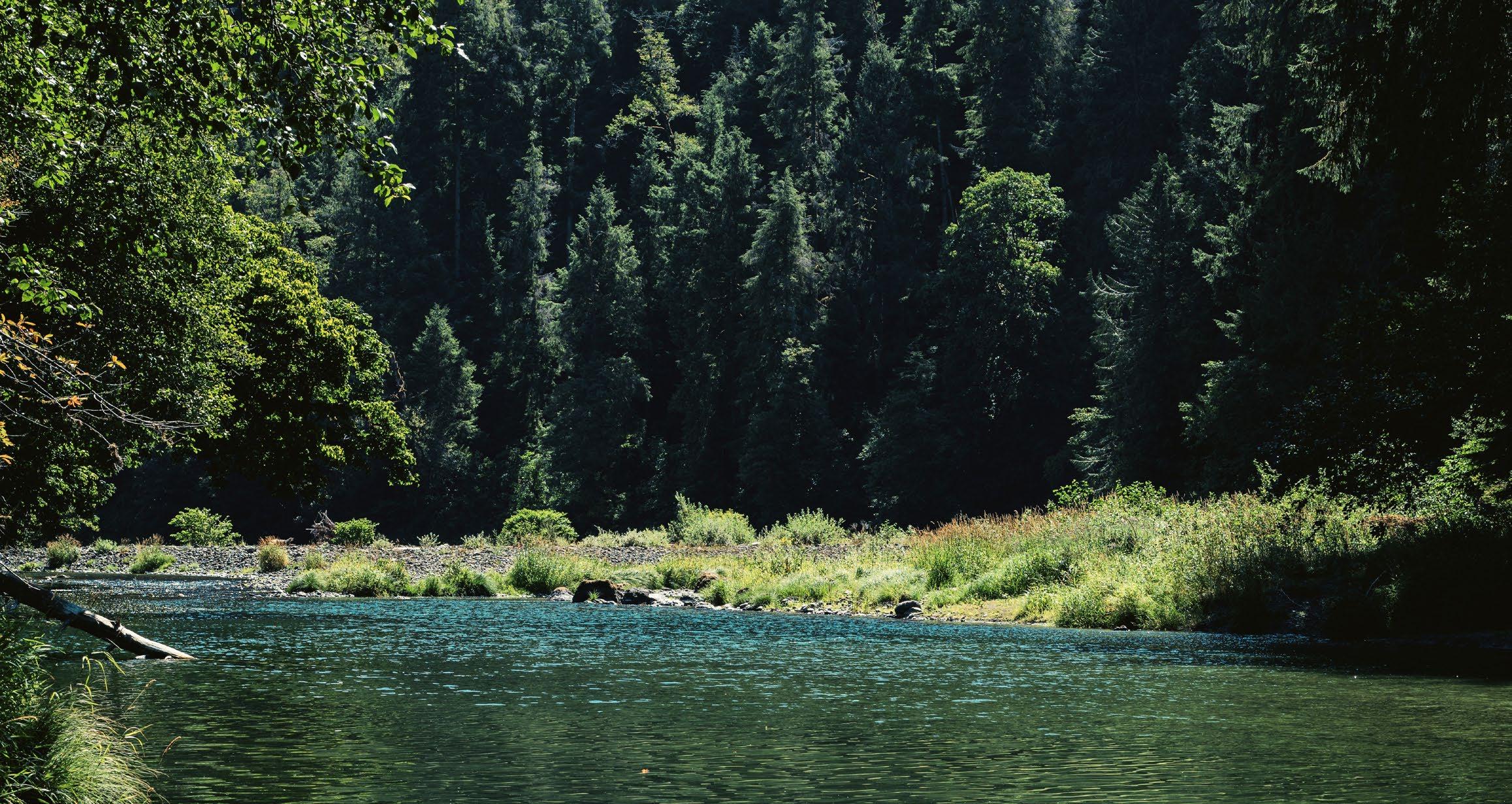



Young men today often struggle to understand their place in the world. Whether it’s a lack of role models, negative messages about masculinity, or the crushing weight of unattainable expectations, our boys need clear guidance and hope. In this memoir, a father and son embark on an adventure to celebrate his son’s journey toward manhood, discovering a deeper connection to God, to themselves, and to each other.
In a world of easy wins and low-hanging accomplishments, it’s rare to subject ourselves to difficulty and struggle. Yet, it’s in doing hard things that we discover our strength. In this story, we see a mother and her daughters face struggles together while learning to play the violin. Their progress is slow, and often only detectable to them, but along the way they find perseverance, confidence, and joy.
Discover the world of the Forest Friends: Fox, Bear, Doggy, and Kit. When they discover that their friend needs help, they must find their bravery and work together to save a life.
IN BLOOM: RITE OF PASSAGE AT THE CORNER OF THE WORLD
A father and son embark on an adventure to celebrate his son’s journey toward manhood
KARIS
An advice column for busy parents
A photo journey through the Pacific Northwest
SINCERELY, TIM: ADVENTURERS BY DEFAULT
A love letter from the founder of Grace Based Families
MOTION
How learning to play the violin alongside my two young daughters has become an adventure in perseverance and beauty
Join Fox, Bear, Doggy, and Kit on a life-changing romp in the woods.
Color your own picture of the Forest Friends
6 ways adventure builds good character in our kids
LITURGY FOR A FAMILY ROAD TRIP
A prayer to say before a drive
FAMILY CONVERSATION STARTERS
Get the conversation flowing with these thoughtprovoking questions
10 WAYS TO BRING ADVENTURE TO EVERYDAY LIFE
There’s no need to wait for a vacation to find pockets of adventure in daily life
BOOKS WE LOVE: THE BLUE BEACON, AN INTERVIEW WITH JORDAN GREEN
All about one of our favorite young-adult fiction series for curious tweens
FUN WORDS WITH FOX: WRITING PROMPTS
Fox gives young readers some great ideas to get their writing juices flowing
BAKE WITH BEAR: BEAR’S PEANUT BUTTER AND JELLY COOKIES
Get out your apron and spoon and make one of Bear’s favorite treats
CRAFT WITH KIT: MAKE A LEAF GARLAND
Create your own leaf garland to decorate your room or cave
As a little girl, all of life was a story. I would tell myself stories while tromping through the backyard or riding my bike down the street to my best friend’s house. My dad was an amazing storyteller and we spent many car rides and late nights listening to him weave tales of adventure, danger, and harrowing quests. Once I learned to read, the door to other worlds opened and has never really closed. But, as people do, I found myself walking through that door less and less as I grew up. Responsibilities, relationships, family, and work steer us away from those portals of imagination, and I don’t believe we’re better for it.
When I was asked, “How about you make a magazine?” I didn’t know what to say. A magazine felt like a mysterious, unreachable endeavor. And yet, the little girl inside me, the one who was constantly whispering stories to herself, could still see a sliver of light coming from behind the door to imagination.
Grace Based Home is our gift to you, and we hope within it you find beauty, encouragement, and hope.
In this inaugural issue of Grace Based Home magazine, we explore the great adventure that is life with our families and the great love that exists within the four walls of our homes. We’ve included memoirs, an advice column, a book review, family conversation starters, and ways to help you bring a spark of adventure into your everyday life. After you’ve read your fill and enjoyed a cup of coffee, don’t forget to share the magazine with the little readers in your home. Our Lightcatchers section is just for kids! There’s a story as well as fun activities like a craft and recipe to keep your kids engaged and curious. Grace Based Home is our gift to you, and we hope within it you find beauty, encouragement, and hope.

We believe that we live out our greatest adventures through our stories. Home, and the people who come and go from it, are pages that can be filled with love, struggle, and wonder. So whether it’s a walk in the woods, a rite-of-passage road trip, learning a new instrument, or launching a magazine, we can do hard things…together. And, it’s in the doing that we discover the grace we need to take on challenges that seem impossible. God’s grace, our family’s grace, and grace for ourselves.
In the end…
All is grace,
Karis Kimmel Murray Senior EditorPS: Visit gracebasedfamilies.com/join to support free resources like this for families like yours.

C.C. Kimmel
In Bloom; Forest Friends: Adventure at the River
C.C. Kimmel is the executive director of Grace Based Families. He is a writer, musician, former pastor, and host of Lightcatchers Podcast. He lives in Portland, Oregon, with his wife, four kids, and a big dog named Wendell.

Maria Baer Perpetual Motion
Maria Baer is a writer, reporter, and podcast host who has been published at WORLD News Group, Christianity Today, The Colson Center for Christian Worldview, and others.

Kimmel Murray Ask Karis
Karis Kimmel Murray is the author of Grace Based Discipline and senior editor of Grace Based Home magazine. She lives in Scottsdale, Arizona, with her daughters, dogs, and too many cats.

Alli Dahlgren Liturgy for a Family Road Trip
Alli Rogers Dahlgren is a singer-songwriter who leads writing workshops through her website shelterwriters.com

Taylor Gonzalez In Pursuit
Taylor Gonzalez is a photographer living in Phoenix, Arizona. Taylor loves to travel the world in search of beauty with his wife, Laurie Anne, and their dog, Oscar.

Jordan Green
Books We Love: An Interview with Jordan Green
Jordan Green is an Oregonian writer and dad who loves the animals, geology, and food of the Pacific Northwest.

Dr. Tim Kimmel Sincerely, Tim
Dr. Tim Kimmel is the founder of Grace Based Families and author of 14 books including Grace Based Parenting and Grace at Work. He lives in Scottsdale, Arizona, with his wife of more than 50 years.

T.B. Coates
Illustrations for Forest Friends: Adventure at the River
Illustrator and author T.B. Coates is a native of New England who has found her home in Arizona.
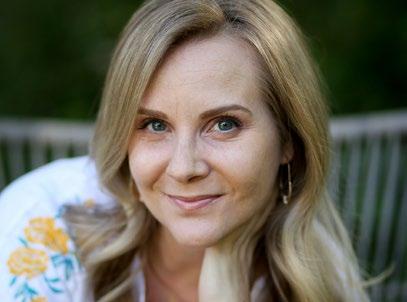
Melissa Balkon
Design and Illustration
Melissa Balkon is a designer and artist with a pesky habit of turning all her hobbies into businesses. She is a native of Michigan but now calls Tempe, Arizona, home.
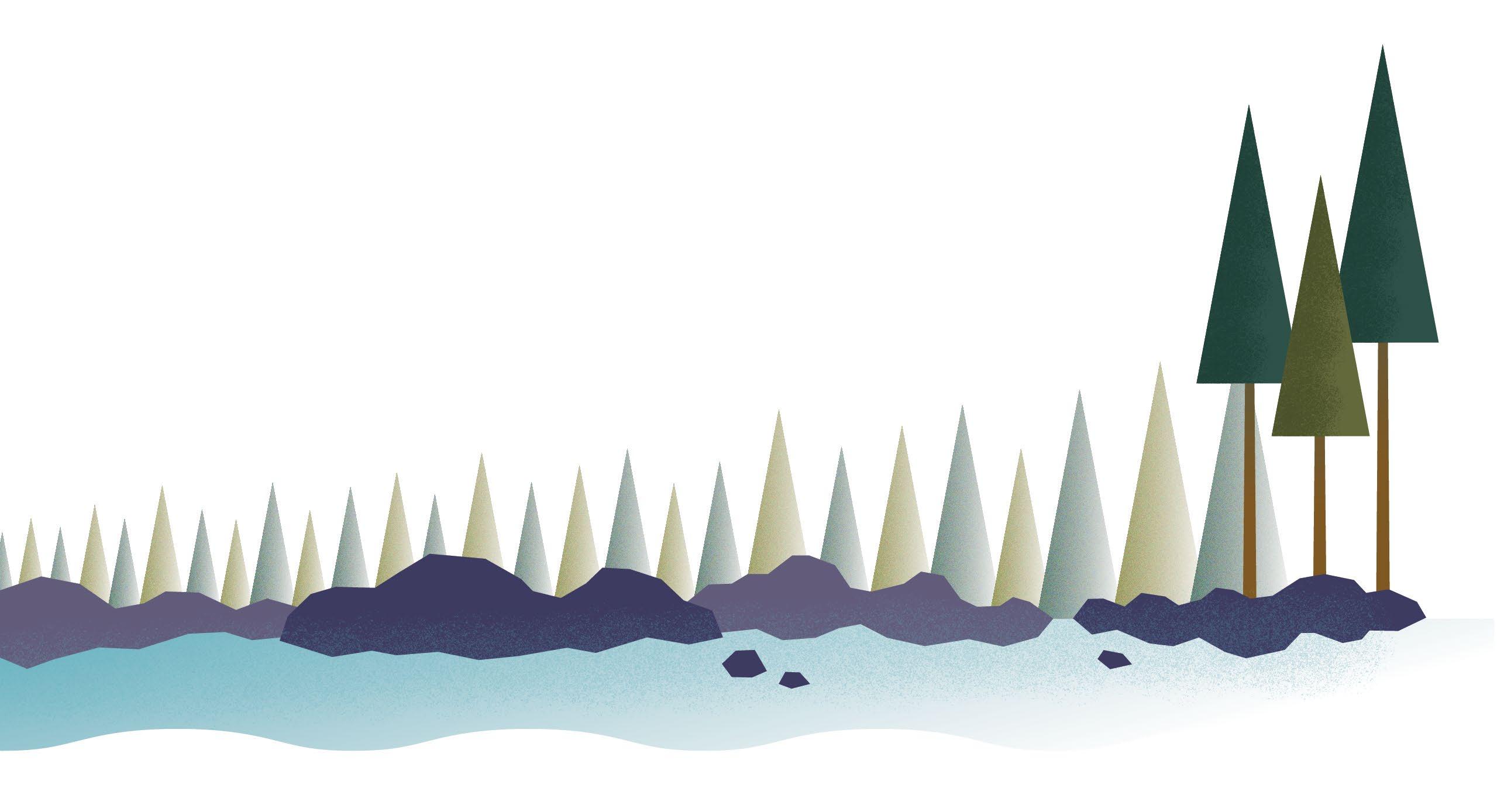
“Ithink this is where Kurt Cobain was born.”
We were about three hours into our drive from Portland, Oregon, to Olympic National Park and we’d just entered Aberdeen, Washington. The car trivia app we downloaded had already served its purpose and the comfortable silence of long road trips had settled between my son and me.
“I guess we should play some Nirvana,” Kyler said as he reached for my phone. “You know, in his honor.”
We decided on “In Bloom,” a favorite of mine, and let the angst and power of the lost boy from Aberdeen wash over us as we started north toward the Olympic Peninsula. Within four days, our adventure would take us over 650 miles in two different countries. When I asked my son Kyler what he wanted to do for his thirteenth birthday trip earlier in the year, he said camping, flyfishing, and “it would be cool to go to Canada, since we’re so close.”
Given his wishes, we planned his rite of passage to Olympic National Park, with a quick trip into Victoria, Canada, before heading back to begin his larger journey toward manhood.
In Jon Tyson’s book The Intentional Father, Tyson writes, “Somebody is going to disciple your son. Somebody is
going to give your son wisdom on how to live. …Your son is going to become someone—he is going to grow up. His character will be formed by someone.”
I want to be that person giving wisdom. I want my wife and I, and the community of men and women in our life, to form his character. Though the trip itself carried less stakes than other ancient rites of passage (we did not send him out into the wilderness with a spear like the Spartans), the stakes of going from a boy to a man are high, and chance is a cruel teacher.
We lost signal shortly after Aberdeen, and for the rest of the drive Kyler was forced to listen to the indie rock I had saved on my phone, which he will claim was the most difficult part of his journey. Going north on the 101, we felt nothing but possibility. Possibility for our trip. Possibility for his life. He was already showing evidence of the change. He can comfortably borrow my shoes. His face shows traces of facial hair and his voice is now a solid bass. As we peered over forests and oceans and the rising Olympic Mountains, I saw in my son a blooming of potential waiting to be actualized.
We stopped in Forks, Washington, to get our fishing licenses and a few supplies before heading toward our campsite. I made as many Twilight jokes as I could, which was my duty as his dad, and then we pulled up to the ground we would call home the next few days.
I didn’t grow up camping. Though I love to travel, I’m not what anyone would describe as outdoorsy. There was a small moment of panic as I unloaded the last of our borrowed camping gear and realized that it now had to be set up and functional for life. But Kyler was eager, and together, we figured it out.
I made an internal promise at the beginning of our trip to lean into the surface moments. In an attempt to be intentional, I can often move too quickly into the “lesson” or the “wisdom” and forget that relationships are built on the ordinary togetherness of life. So, with a few exceptions, I was intentionally unintentional with our time. We cooked our hot dogs over the fire. We played chess and talked about music. We put on headlamps and read while the flames turned to embers and the stars grew bright through the forest canopy.
I am painfully aware of the challenges that lay ahead of boys growing up to be men right now. I have four children, three of whom are boys. In the New York Times opinion piece “The Crisis of Men and Boys,” David Brooks writes, “If you’ve been paying attention to the social trends, you probably have some inkling that boys and men are struggling, in the U.S. and across the globe.” Between lower academic performances, growing apathy, and higher rates of suicide, boys and men are in crisis.
My sons will face this crisis. They will come face-to-face with the foolish cruelty of masculinity defined by power and force. They will fight against the growing apathy found in modern men and the temptation of remaining a boy forever. They will have to learn to feel their big emotions without being a servant to them. They will have to face their own demons and find their place in the larger story God is writing.
My son sleeping next to me, though he was filled with possibilities and dreams, was also on the brink of the greatest fight of his life—the fight to be a good man in a world that values the shallow, the cruel, and the aimless. As we slept that night, I felt the weight of it all and knew that it would be an uphill battle.
We had to get going early the next morning. We made the pancakes and bacon quickly before driving to meet the fishing guide. Before we left, we had one of the few planned intentional moments of our adventure. I asked him what it looked like to be a man. Of course, he listed off everyone but me as an example, including my brother and Thor.
He gave short answers. The conversation wasn’t long. But over the course of our breakfast, he heard me tell




him something that I think many boys both need and long to hear: being a man means using our strength and our position to serve and care for those around us. It has nothing to do with sports or cars or muscles. It is not about bank accounts or influence. It is not about high cheekbones or body counts. The measure of a man is his capacity to serve.
We met the guide at a nearby store and followed him out to the Hoh River, a few miles inland from where it rushes into the Pacific Ocean. The Hoh River flows out of a glacier in Mount Olympus, cascading west through a rainforest before sprawling out into the wide bends we found ourselves in that morning. The river was low compared to the other seasons, and the fish, though present, were less enthusiastic than in the peak winter season. But it didn’t matter. Kyler and I walked into the river in our waders and felt the magic of standing in such remarkable beauty. The river was nectar cast down from Olympus and we were there to witness its power.
Our guide led us down the river by raft, where we saw a herd of elk before we made our first stop. Apart from an equally unsuccessful fly-fishing trip when I was about Kyler’s age, I was just as much a novice to fly-fishing as my son. We spent the next few hours trying not to break
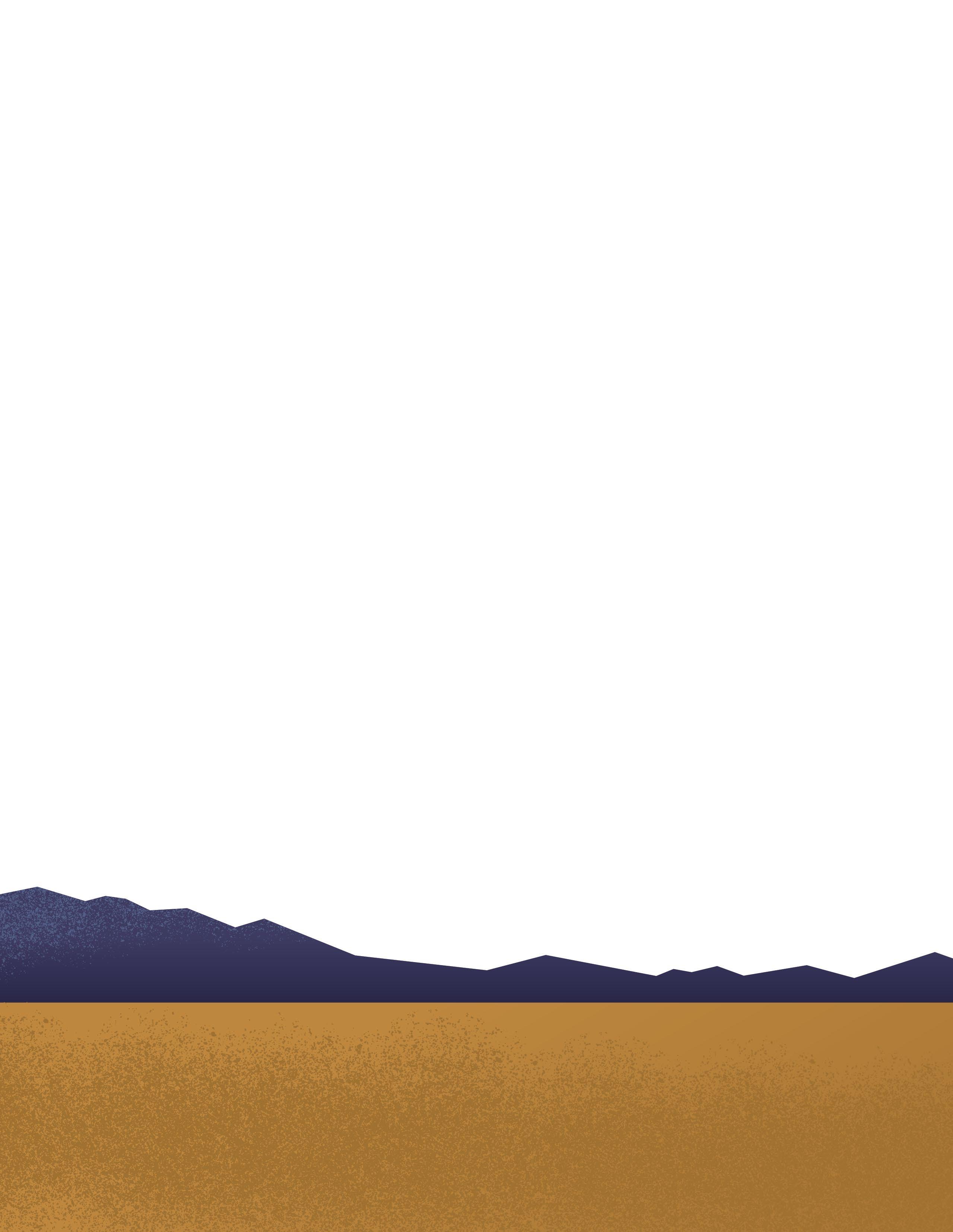
anything. Our guide was patient but seemed resigned early on that this was not really going to be a “fishing” trip. We were going for summer steelhead, and even saw one leap into the air about a hundred feet from our raft, but the fish were safe. No steelhead were harmed while we practiced our three-stroke cadence of launching our fly into the water.
By the time we returned to our car, our socks were soaked through and our arms and shoulders sore, but we did it. We successfully answered the question of whether or not we could last longer than a day on the show Alone And we were happy.
Before driving back to camp, we stopped at the Hoh Rain Forest. With over 170 days of rain each year, the ancient forest is home to thousand-year-old trees and moss-covered paths. Kyler is not a hiker, so he decided the faster he hiked, the sooner it would be done. This turned out to be a win-win, since I love to work up a bit of a sweat while hiking. But the forest, in all its power, had a different plan and made us pause and watch the work of millennia. In one particular spot, we found a network of connected trees with their roots aboveground. The fallen nurse tree that brought the trees to life had decomposed and disappeared.

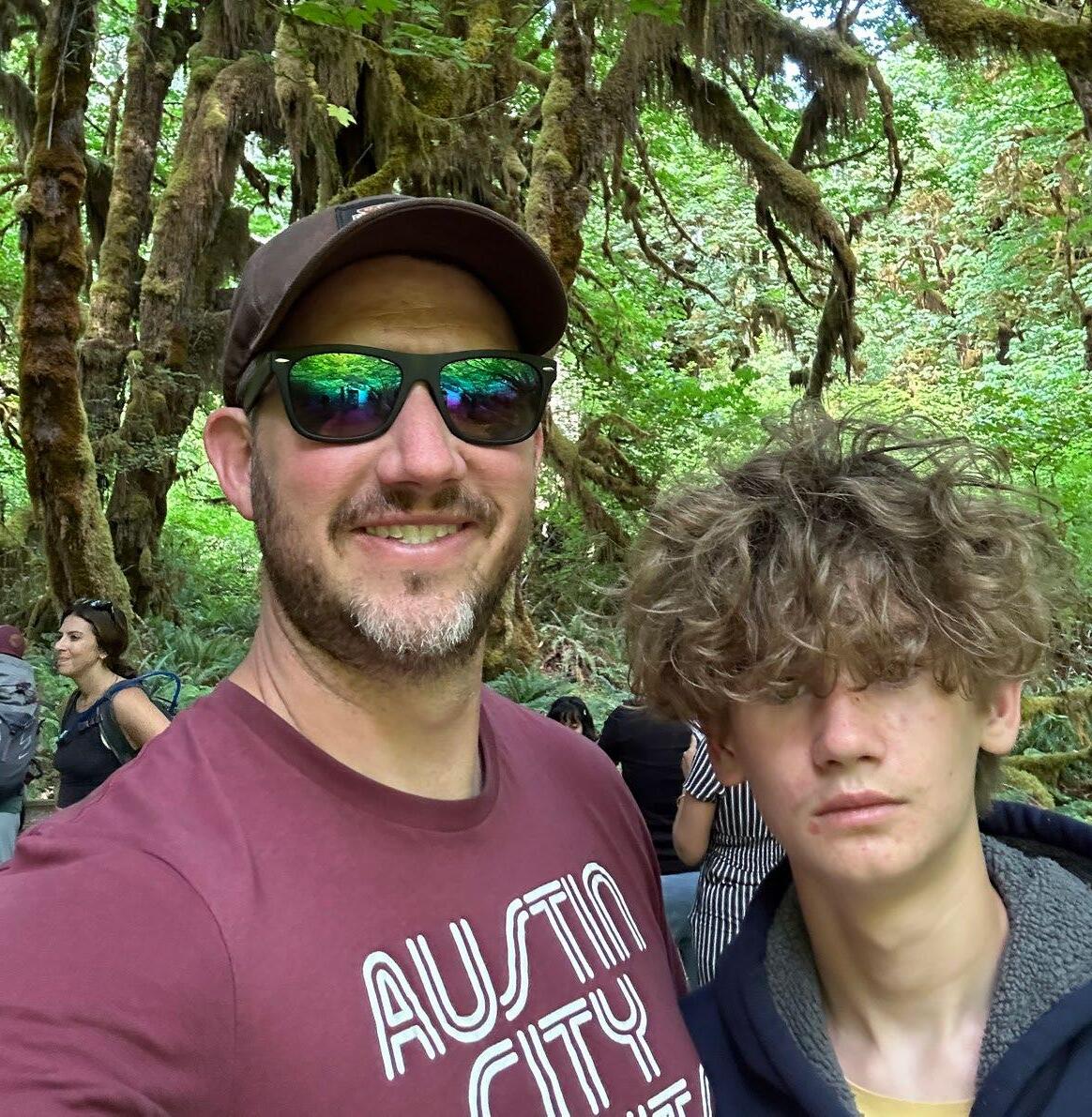
Not to be morbid, but I know that one day that’s all that people will see of me. I will be gone and in the ground and the only witness to my existence will be the strength of the trees that sprouted from me while I was here. I made Kyler take a picture next to it.
We spent our last night at the campground much like we did the night before. Bad hot dogs. S’mores. Chess and poker. The ebb and flow of conversation and the comfortable silence as we read next to the fire.
Part of the challenge that boys face as they become men is an insufficient understanding of what it means to be great. There is a desire for glory in everybody that is not rooted in vanity or greed or ambition, but rooted in the glory of the God who created us. The word for glory in Hebrew is kavod, the same word for “weight” and “heaviness.” For too many boys, their greatness—their glory—is too light. Money that can be lost. Strength that will wane. Power that can be usurped. True glory has been replaced by a cheaper and lighter substitute.
One of my favorite quotes from the early church fathers comes from Irenaeus: “The glory of God is man fully alive.” Too many boys are growing up to be men not fully alive. They train to carry the lighter and cheaper weight of meaningless material glory and, when they become men, lack the strength to face the adventure they were created for.
Kyler may not have caught a fish and he might have sped by a tree he should have paid more attention to. But on this trip he was a witness to the glory of God. He was a witness to the full life lived in the presence of true glory.
The next day, we had to be in Port Angeles to board the ferry to Victoria by noon. We made more breakfast and began the task of cleaning and packing up. We were comfortable in our spot by then and a bit of sadness hung in the air, knowing that we were over halfway through a trip we had dreamed about together for almost a year.
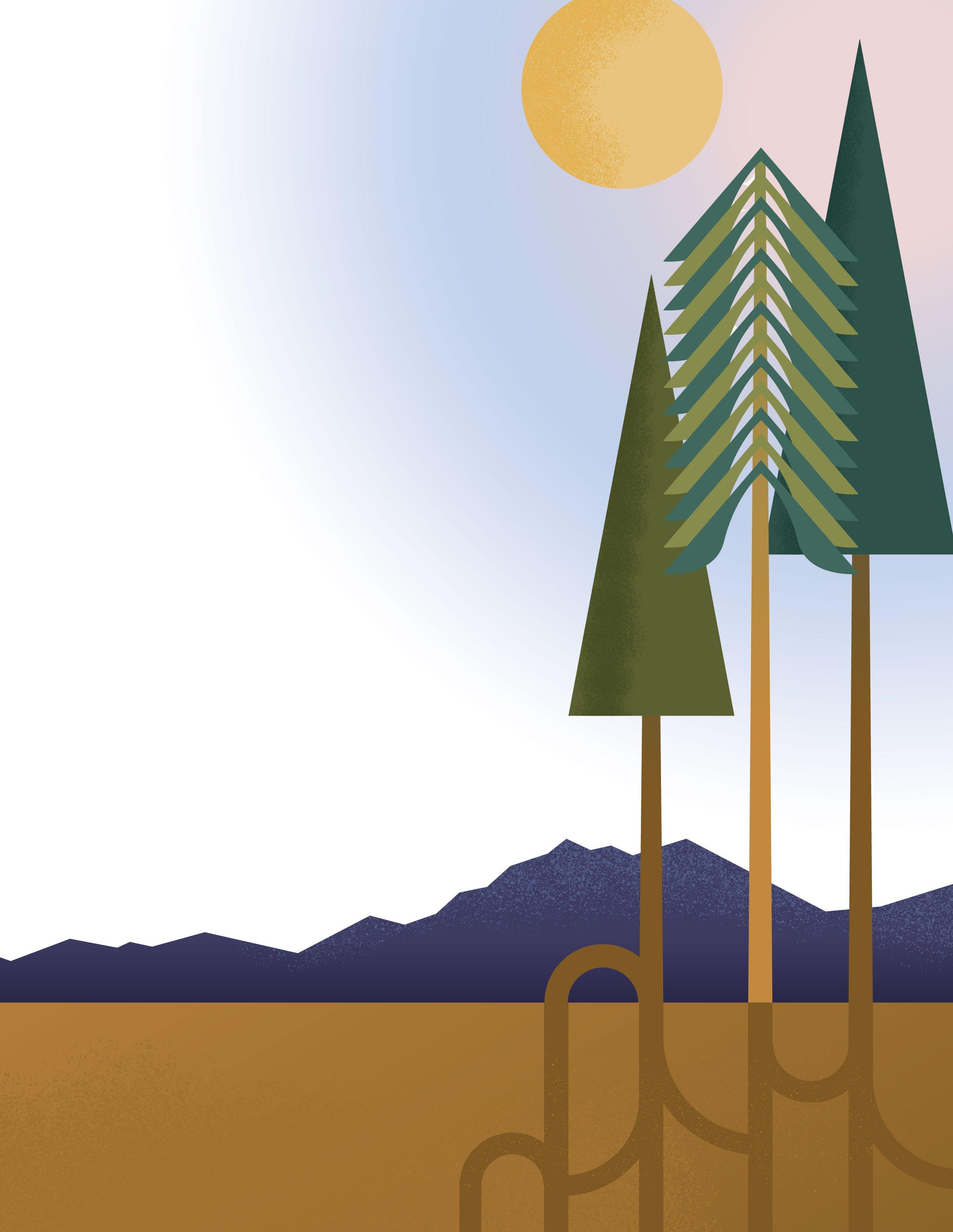
There is a desire for glory in everybody that is not rOOted in vanity or greed or ambition, but rOOted in the glory of the God who created us.



During breakfast, I reviewed yesterday’s brief lesson in manhood and started on the second day’s theme. Once again, his answers were short and the conversation brief. Conversations like this for a thirteen-year-old boy are almost as bad as having to listen to their dad’s music for hours of a drive. I wanted to be intentionally unintentional, but there are things fathers need to tell sons. So we talked about wisdom.
I told him that just like the measure of a man is his capacity to serve, his wealth is found in the wisdom he accrues in life. Something all sons need to hear: wisdom is your greatest asset and the only way to get it is through suffering, mistakes, and time.
As I’m writing this, I’m about six months away from my fortieth birthday. Overall, I have lived an incredibly privileged life. Yet, I have suffered. I have made mistakes. And I’m just now starting to see the payoff of the interest my suffering and mistakes have accrued. I hope that my son, as he grows into the man God made him to be, will remember the ancient trees, the canyons carved by glaciers, and the patience that wisdom demands.
It took longer to pack up our gear than expected and we had to forego our plans to paddleboard on Lake Crescent before stopping for lunch in Port Angeles. We were done with the rugged part and back in the type of travel I’m more suited to. We boarded the ferry with our freshly minted passports and watched as the Olympic peaks came into sharper relief behind us.
Though Kyler had technically been out of the country as a baby, this was the first time he was aware of being
in another country. We both leaned over the side of the ferry as we approached the magic of Victoria’s harbor. The city feels transported from England, a truly foreign place within a few miles of the upper-left coast of the U.S.
We decided to spend the hours before dinner seeing the city, so we rented e-bikes. One of my hopes of the trip was that Kyler would get a glimpse of what growing up will look like. I want him to look forward to becoming a man, to experience the freedom that will come with his growing responsibility.
Too often, youth, and the carelessness that youth allows, is put on a pedestal. Thanks to the prevalence of young adult fiction—an American literary invention—and countless movies of the old galavanting as young, aging is passé. A reality to be mourned.
But I reject that, and I want my son to reject that as well. I want him to always see his next years as his best years. I want him to cling to the power of Proverbs 16:31: “Gray hair is a crown of glory.” On that afternoon in Victoria, Kyler got a glimpse of the exciting, big world he would get to explore as he got older.
We skirted along a bike path on the south coast of the city. Driftwood trees lined the sullen coast and the city rose to our left. After traveling a few miles, we decided our e-bikes would be better used exploring different bookstores, so we turned inland for literary treasures. After struggling with the locks on our bikes, we made it into a store in the heart of the Fairfield neighborhood, bought a few books, and stopped for coffee.
Kyler hates the smell of coffee and opted for hot chocolate. As we sat there, I saw both Kyler the boy and Kyler the man. A shiny new city explorer with a heart filled with wonder sipping on a hot chocolate. The possibility that imbued our trip was written on his dark eyebrows scanning the street for where our adventure would take us next.
After returning our e-bikes, we had about a mile walk to our Airbnb. We were tired, but I’m a firm believer in walking new cities, so we made our way through the narrow streets of Victoria to a civilized room with a real bed and TV and showers. After washing days of dirt and sweat from our bodies, we walked to a restaurant of Kyler’s choice—a ramen place with a view of the harbor.
We devoured our bowls. It was the best ramen we’d ever had. I’m sure the fact that our previous dinners consisted mainly of bad hot dogs and just-add-water mashed potatoes helped that fact. We began the natural talk of home that creeps in near the end of an adventure. We talked about his mom and his siblings, his friends and school and church, the remaining trips of the summer.
I don’t know if I could tell you exactly what we talked about that dinner, but I do remember looking at my son and seeing the change. This was the son I carried on my shoulders on hikes, built pyramids out of blocks with, and taught to ride a bike. This was the son I held to sleep at night and trailed behind as he went door-to-door in his Halloween costume. This was my little boy.
Maybe one of the reasons we try to downplay big transition moments is because they are always a mix of grief and joy. My son was gaining his adultness, but at the cost of his boyhood. Kyler was only ever going to get older. Over time, the lingering vestiges of his youth would vanish unannounced and be replaced with the sproutlings of adult cares and joys and fears and sadness. I was not having dinner with a boy. I was having dinner with a man filled with potential, and I was filled with grief and joy.
We caught the early ferry back and made our way along the 101 on the east side of the Olympics. Kyler had a tower of books at his feet and we enjoyed the music he made sure to download before our drive. We drove along forests and lavender fields, the river mouths emptying into the deep blue bay.
The conversation was natural and content. Before we got too far, I concluded the final act of intentional moments and told him the truth about him, a version of which all sons and daughters should know: God made you uniquely suited for the adventure you were born to live. I told Kyler that he would face suffering, pain, and loss. Every joy he has will be the flip side of the coin of grief. But he has what it takes. I listed off the unique gifts I see in him. How God will cultivate his wisdom to better serve those around him. I told him I would do everything in my power to help him become who God made him to be, like a nurse tree in the forest.
After driving for hours through small fishing towns and verdant Washington forest, we crossed back over the Columbia River and arrived home. Our trip ended with inside jokes, a smell that lingered for days, a stack of books, gifts for the siblings, and the opening pages of a story Kyler will write the rest of his life.
“Bruises on the fruit Tender age in blOOm”Kurt Cobain
C.C. Kimmel is the executive director of Grace Based Families. He is a writer, musician, former pastor, and current host of Lightcatchers Podcast. He lives in Portland, OR, with his wife, four kids, and a big dog named Wendell.


Dear Karis, My son has ADHD and autism spectrum disorder. How do you discipline, or guide, a small child who lacks impulse control?
– M. in Phoenix, Arizona
Dear M.,
Your question is one I receive frequently. Parenting is hard. Parenting neurodivergent children is even harder. Yes, they are a gift and their unique ways of thinking and relating to the world remind us of the diversity of God’s creation, but the challenges this presents for them and for us doesn’t always feel like a gift. I have ADHD and so does my daughter, so I speak from personal experience.
You are not alone. Many parents of neurodivergent kids struggle to find effective ways to parent and discipline their kids, and methods that work for neurotypical kids often fail to produce the desired results for our kids who have differences like ADHD, autism spectrum disorder, or sensory processing disorder.
You mentioned a lack of impulse control, but focus, executive function, time management, and socialemotional skills are also areas where neurodivergent kids may be developmentally different from their peers. This results in our kids struggling with their behavior both at home and at school.
While this list of recommendations is nowhere near exhaustive, there are a number of interventions that can help you set your neurodivergent kid up for success and allow them to live to their full potential. They are easily remembered using an acronym: T.R.E.A.T.
While conditions like ADHD, ASD, SPD, and learning disabilities aren’t diseases, they often manifest symptoms that cause our kids significant suffering. For that reason, the very first step we need to take is to seek to mitigate that suffering with treatment. Counseling, medication, occupational or physical therapy, and special education can help alleviate some of the symptoms that cause them suffering and free them up to live happy, meaningful lives.
Parents cannot do this alone. We need to assemble a team of people like doctors, therapists, and teachers to help our kids thrive.
Neurodivergent kids have brains that function differently, and often this means they lack or are delayed in developing the executive functions in their brains that come naturally to neurotypical people. That’s why our neurodivergent kids need reminders. Verbal reminders can be helpful, but when these executive functions of their brains are lacking or delayed, it’s most helpful to find ways to take these functions from the ethereal realm into the tangible world. Lists, flow charts, calendars, chore charts, and even fun gadgets like buzzing digital watches become indispensable tools that help our neurodivergent kids help themselves.
The goal is to develop several layers of visible, sensory, and auditory reminders that cue our kids to tasks, behaviors, and skills that help them accomplish their daily goals. This might be a poster on the wall of their bedroom with a flow chart displaying the tasks they need to complete to get ready for school as well as a timer to help them pace themselves successfully.
Our kids want to do well. They want to be successful in the things they do, and if they aren’t doing well, it isn’t usually because they are trying to misbehave and ruin our day; it’s because they are lacking something…a skill, a tool, or the support they need to do better.
Exercise helps everyone, but our neurodivergent kids need it even more. Exercise secretes biochemical compounds in our bodies and brains that help us relax, focus, and feel happy. But exercise isn’t just running on a treadmill or lifting weights at the gym. It can be playing a sport, taking a walk in nature, pulling weeds in the garden, or busting some sweet dance moves in the kitchen!
In addition, unstructured play is extremely important for our neurodivergent kids’ brain development and health. Giving time and space for our kids to use their imaginations and creativity in ways that are unscheduled and unstructured allows them to decompress and engage with their senses. Don’t be surprised if this sometimes looks like our kid throwing dirt clods against the back fence for forty-five minutes!
When we talk about accommodations, it’s important to remember that we celebrate our neurodivergent kids’ differences. The world would be bleak without our musicians, artists, architects, scientists, inventors, and comedians, who are often neurodivergent people. I don’t like to use the word “normal” to refer to anyone, but embedded in the term “neurotypical” is the idea that there is an average or typical way that most people think and function, and the world is structured around the average to ensure that it caters to the most people. This means that we need to create “on-ramps” for our neurodivergent kids.
Just like a wheelchair serves as an accommodation for someone with physical limitations, we need to look for ways to accommodate our neurodivergent kids’ brains. Think of these accommodations as a “wheelchair of the mind.” This might play out as extra time to complete tasks; a quiet, calm space to decompress; breathing exercises; sensory toys; simplifying routines; or adding stimuli like music or white noise.
The most important question we can ask ourselves is, “What would help my child be successful right now?”
Remember, our kids want to do well. So, if they aren’t doing well, we must be on the lookout for ways to accommodate their differences so that they have a mental, emotional, and physical on-ramp to success.
Neurodivergent people have a greater-thanaverage difficulty with what psychologists call “perseveration.” This is the ability to stop doing one thing and begin doing another. In other words, transitions. Transitioning from doing a jigsaw puzzle to writing your spelling words; getting out of the bath and getting dressed; going from the noisy car with music blasting into the library.
We can help our kids with transitions in a number of ways. First, giving our kids advanced warning that there is a transition coming gives their brains some lead time to anticipate change. Second, reviewing expectations and timelines helps them understand how they should
behave. For example, “We will be arriving at the hospital to visit Grandma in a few minutes. The hospital is a place where people aren’t feeling well so it’s important that we use quiet, calm voices and that we move gently and don’t run or roughhouse.”
Finally, it can be helpful to do what I call a “vibe check.” Transitioning between feelings and emotions can be challenging for our kids. Doing a vibe check can help them assess how they are currently feeling and verbalize how they’d like to be feeling. If they are angry, help them identify the feeling and ask if they’d like to spend some time outside to help them feel calm.
BONUS TIP:
Neurodivergent kids benefit greatly from positive reinforcement. Because our differently-abled kids have to live and function in a world that isn’t designed for them, they can start to get the idea that everything they do is wrong. Noticing the ways that they are doing well and complimenting their character goes a long way in affirming that they are beautiful human beings who were designed by God for an incredible purpose.
When we give our kids the freedom to be different, we don’t just tolerate those differences but celebrate them! God’s love for us isn’t tied to our behavior or functioning. He loves us in spite of our flaws and challenges and delights in our diversity. You can represent that same love to your children by providing them with discipline that takes their unique design into account.
All is grace,
Karis Kimmel Murray is the author of Grace Based Discipline and senior editor of Grace Based Home magazine. She lives in Scottsdale, Arizona, with her daughters, dogs, and too many cats.

If you have a discipline question for Karis you’d like her to answer in this column, please submit it to family@gracebasedfamilies.com with the subject line: Ask Karis


Committed to a life of adventure, Taylor and Laurie Anne Gonzalez travel the world in pursuit of beauty. Taylor is a photographer, documenting their travels, while Laurie Anne studies the landscape for inspiration.
Featured are photos of their recent trip through the Pacific Northwest. You can find Laurie Anne Gonzalez’s art at laurieanneart.com. You can find more of Taylor Gonzalez’s work at tbgonz.com


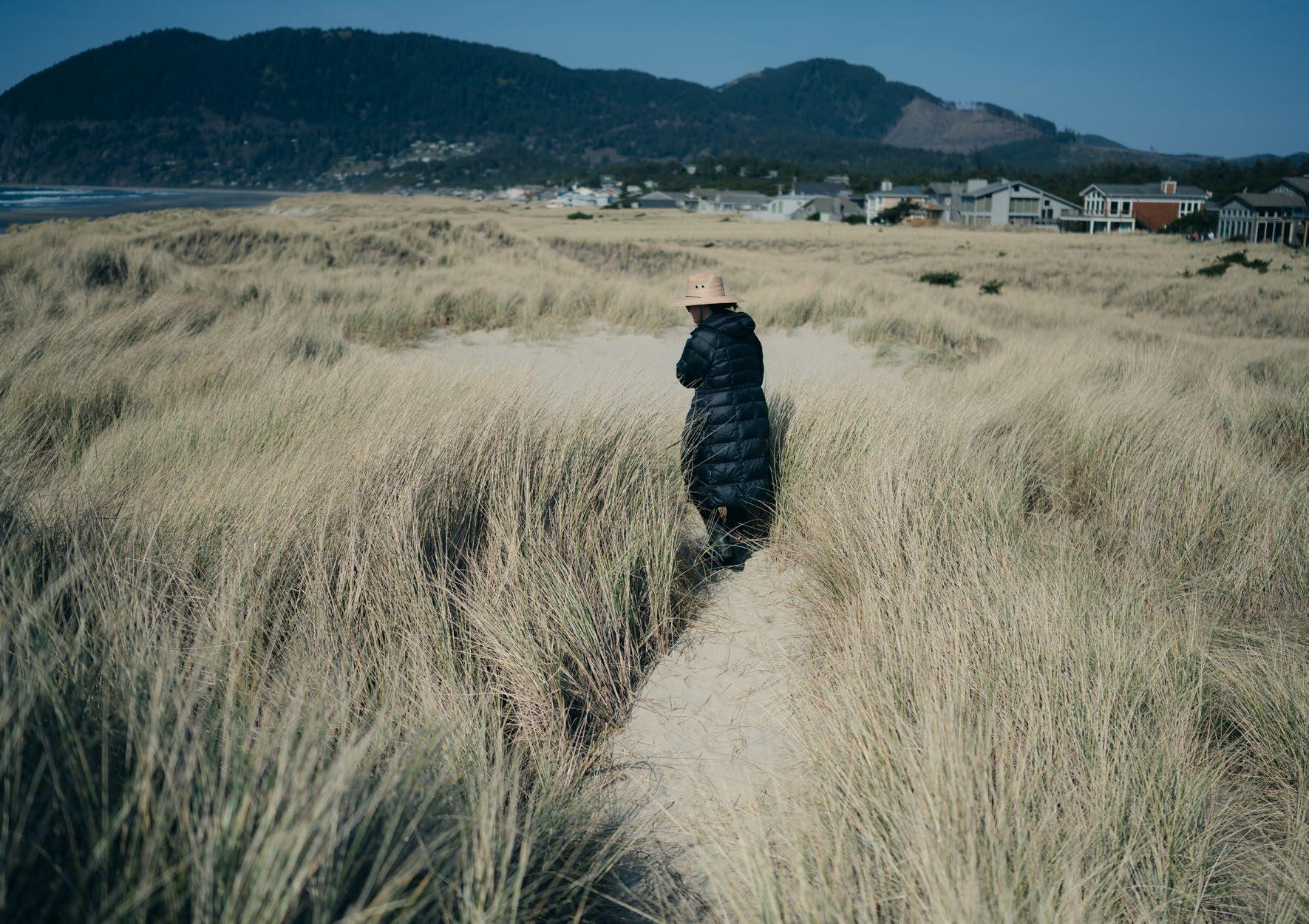




 The Tillamook River
The Tillamook River
If you’re looking for a great adventure—and have a family—you don’t have to go any further than where you are and who you’re with. Adventures are typically sold as a combination of risk, unknowns, and excitement requiring courage, nimbleness, and tenacity to pull off. Protocol assumes that if you want to claim “adventurer” on your social media profile, you’re expected to attach pics of you doing something wild like climbing a cliff with your toes and fingertips or free-falling from an airplane with just a big sheet and strings to break your fall. Or…you could raise some children.
“The key to a good outcome is mitigating as much risk and eliminating as many surprises as possible before you’re into your adventure.”
I actually know a couple of professional adventurers— what I’d call “adventurers by design.” I’ve learned from them that the key to a good outcome is mitigating as much risk and eliminating as many surprises as possible before you’re into your adventure. Which is why they put so much training, planning, and preparation into whatever crazy thing they’re going to do.
Then there’s us—moms…dads…grandparents—what I’d refer to as “adventurers by default.” Except we don’t get the luxury of mitigating or eliminating anything when it comes to the risks or surprises that go with our titles. We find out early on (and often the hard way) that each child comes with a mind of their own. While trying to help them make up their independent minds about God, life, love, and themselves, it’s not uncommon to feel like we’re losing ours in the process. None of them have to be taught to be possessive, territorial, moody, or even dishonest. All of them have to be taught to say “please,” “thank-you,” “excuse me,” and “I’m sorry.” Each new
season of their age brings its own set of risks, unknowns, and surprises. And before our main job is done, we’ll spend a couple of decades playing catch with their flus, strep throat, and pink eye.
But along the way, we get to live one of the greatest adventures there is. It has all the elements of the kind the wild-at-heart pursue, and requires just as much courage, nimbleness, and tenacity to pull off. But unlike those website adventures, being a parent or grandparent gives you the quiet heart-rush that comes from getting to turn some lights on in this present darkness, write some of the script for a time you will not see, and best of all— touch eternity.
Wise adventurers (and parents) never go it alone. And fortunately, we don’t have to. Faith gives us the opportunity to take on the highs and lows of raising our kids side by side with someone who’s never surprised by surprises and has never met a risk he can’t handle. His name is Jesus. When we let his truth guide the way and his grace define how we behave along that way, we can legitimately list “adventurer” in our profile. And if anyone demands proof, just post some pictures…of your kids.
Sincerely, Tim
Dr. Tim Kimmel is the founder of Grace Based Families and author of 14 books, including Grace Based Parenting and Grace at Work. He lives in Scottsdale, Arizona, with his wife of more than 50 years.


How learning to play the violin alongside my two young daughters has become an adventure in perseverance and beauty
by Maria BaerThere’s more mathematics involved in playing the violin than I would have imagined. It’s physics, really. You get the rich, church-bell sound not by pushing the bow on the strings but by resting and gliding it. To play louder you do not change the pressure of the bow but the speed. Speed equals volume. Location equals tone. Vibrato is in the arm, not the fingers or the wrist; and the perfect C-sharp is a little closer to a D than you’d guess.
Two years ago, my then five-year-old daughter started taking violin lessons. This was entirely my idea. I spent my childhood desperately wishing to play the violin, only to be plopped in front of a piano instead (which I loved, to be clear). So renting that little one-eighth violin (it looked like a doll’s instrument) and placing it gently in my girl’s hands every Monday after school was absolutely an attempt to live vicariously through her. I recognize that’s generally a tacky thing to do, but being as convinced as my husband and I were of the incontrovertible benefits of learning an instrument, I thought that was probably OK in this case.
Six months went by, and I was hanging on every word from her instructor. Six months of watching my daughter learn to form her right hand just so (for the bow hold) and her left hand like this (her violin hand) and clap little nonsensical rhythms (Miss-is-sip-pi hot dog!) And read the notes on the treble clef. That Christmas, my husband surprised me with my own grown-up sized violin, freshly tuned and impossibly delicate, along with lessons of my own. I was a little embarrassed. I was thrilled.
Now, every Monday afternoon, my two daughters and I embark on this adventure together. We march up the porch steps of our teacher’s house with three instrument
cases of various sizes slung over our shoulders, looking like Goldilocks’s three bears. We shuffle inside, remove our golden, polished violins, and tighten our bowstrings. My lesson is first.
We’re learning the Suzuki method, also known as the “mother-tongue” method, and our graduate-degreed instructor has a Very Strong Conviction that it’s such a great thing that my daughters sit in the back of the studio and watch my lesson before theirs. Sometimes they get bored and drum their fingers on the table. Sometimes they whine and I get flustered.
My older daughter’s lesson is next, followed by my youngest—whose perfect little hand is just now getting used to finding that balance between tension and passivity in her bow hold.
We do this every Monday.
If we were to tally up the minutes, my girls spend most of their life outside their violin studio, living a fundamentally effortless childhood.
They go to school, play in the backyard, color, play “house,” and arrange and rearrange their dolls on their bunk beds. They brush their teeth and complain about broccoli and really want to watch one more episode of Bluey. Learning the violin is something else. It does not come naturally; to them or to me. (I’m not sure I’d trust anyone who claimed playing the violin came “naturally,” actually.)
Together, in real time, my girls and I are learning something entirely new. We’re learning the obvious things, of course: which note is where, and how to place just the very tips of our fingers on the strings, and which kind of movement makes the violin sing and which kind makes it squeak. We do “pinky finger” exercises. We silently move our arms in time with the rhythm of the song, like little mimes, before we finally pick up the bow. I am 37 and I do this standing next to my five-year-old, who is also doing it. We feel kind of silly but we do it anyway. We learn the notes of the songs that make up Suzuki’s canon, playing at first what sound like nursery rhymes before graduating to concertos and waltzes and the sorts of songs we’ve heard in movies about castles or at the ballet.
But along with the notes and the posture, my girls and I are learning the intangibles. Including: what it feels like to
feel a little silly doing something but to do it anyway. And what it feels like to fail at something, over and over, before we get it right even once. Mostly, we’re learning how to be frustrated, discouraged, bored, and just generally uncomfortable; and how to keep practicing anyway.
Early in her lessons, my oldest daughter, Naomi, hit a brick wall. The novelty had worn off and she was over it. She fought me at practice time every day, collapsing into a five-year-old tragicomedy on the living room rug the moment I told her to get out her instrument. I continued to push her, but it became exhausting. I pleaded for help from our instructor, and she gave Naomi an unusual assignment: to put down the violin and make a list of the songs that made her anxious.
In her squiggly kindergartner handwriting, she carefully copied the titles: (1) “Song of the Wind” and (2) “Go Tell Aunt Rhody.” (There was something heartbreakingly sweet about such playful titles written with such earnest grief.)
The following week, our teacher considered the list. “I see ‘Song of the Wind’ and ‘Go Tell Aunt Rhody’ are making you feel frustrated,” she said. Naomi nodded timidly. “OK. We’ll play some other songs first. And then we’ll take a really deep breath, and we’ll play these.” This proved to be a bit of magic. Our teacher had made Naomi feel simultaneously heard and gently pushed. She acknowledged Naomi’s frustration without caving beneath it. Yes, these pieces are hard. And we are going to play them, and we will know they are hard.
Naomi still gets flustered and discouraged sometimes. But now she knows that’s not an emergency.
When you have a baby, people will tell you to follow your instincts. Whether that’s good advice depends on the context, which probably makes it bad advice. But here’s what I do know: as a mom, my instincts are almost always bent toward protection. I never want my girls to be sad, hurt, frustrated, scared, disappointed, or in danger. If I see pain coming for them, I become the mom from the urban legend, somehow finding the superhuman strength to lift the car off my child. It’s not

just that I never want my kids to experience difficulty; I also know it would hurt me to see them experience difficulty. And I don’t want to hurt either.
But sadness, hurt, frustration, fear, and disappointment are going to come to my girls anyway. We live in a fallen world that can’t help but give these to them. So even when watching them hurt feels like nails on a chalkboard and splinters to the shins, I have to trust that leading them deliberately toward certain difficult experiences now is what’s best. Because they need to learn how to get through them. They need to watch themselves get through them.
Isn’t that what our God does with us?
When I was a kid, I saw an astonishingly small child play the violin on David Letterman. I was in the kitchen, spying on the television in the living room. I wasn’t supposed to be out of bed. I was trying to pour a glass of milk. I remember about the milk because when I saw the little girl playing, with dramatic sweeps of her elbow and a look of fierce concentration that was jarring on such a young face, I dropped the jug. The gallon burst, a creamy flood washing over the linoleum floor.
I don’t remember what happened after the spill, but the emotional core of this memory is the little girl. A “violin prodigy,” Letterman had called her. I didn’t know the violin could sound like that. I didn’t know little girls could make the violin sound like that. I had dropped the milk because she had made me feel suddenly, powerfully, and inexplicably sad. I think I felt bad for her. She was too serious. She looked like she knew too much for her age. I felt sad for myself too. Why couldn’t I play like that? Decades later, I’m convinced there’s an upside to lacking prodigious natural talent. There are downsides, obviously. (To my knowledge, Letterman never had a “kids with mediocre ability” segment.) But there is magic in being sort of bad at something, or at least in not taking to it right away. If my girls, somehow, found they could play Vivaldi the second they tuned their strings, how could I possibly convince them that to struggle is worthwhile?
At the same time, I’m hoping to communicate to them that proficiency isn’t the total goal here either. I don’t want them to think that only if they make first chair at the orchestra will the whole thing have been worthwhile. Becoming that little girl on Letterman, or a grown-up version of her, isn’t necessarily the aim. I want them to find her passion more than I care about their finding her ability.
I’m hoping my own clumsy playing points them in this direction. I’m under no illusion that my violin practice is “going somewhere” in any professional or economic sense. I have no aspirations for any stage outside those of the rented churches into which my instructor forces me, twice a year, for the “studio recital.”
What I’m really after is the joy of playing. I just… really like it. When I was younger, I would have been embarrassed to admit this. What kind of chump spends time and money and frustration on something that’s never going to make her a dollar, lose her a pound, or gain her an audience? Who does things just because they like to do them anymore?
Obviously, I’ll be thrilled if one or both of my daughters love and excel at playing the violin so much that it factors into their vocation. And I also think it’s reasonable and healthy to encourage them to work toward accomplishments that they might not know enough to desire now—in other words, whether or not they want to play the violin right now isn’t the only factor in determining whether they’re going to.
But every time they find that bell-ringing tone, or their pinky finger hits just the right spot on the D string, or something clicks and they just get the feeling of vibrato, I want something more for them than a sense of achievement. I want them to feel what it’s like to love something for its own sake. I want them to feel like they’re doing something mystical. Whoever thought an object like this could make a sound like that—like the tinkling of a crystal chandelier, or water dripping into a copper sink?
We aren’t utilitarians; we are Christians. And I believe being earnestly, un-cynically excited by and about something beautiful simply because it’s beautiful is deeply Christian. Beauty is never a waste. Wildflowers still grow in abandoned fields. Galaxies exist far beyond those humans will probably ever see. God sees them, and God loves beauty.
If you doubt that playing the violin, even clumsily, can remind someone of this, then I humbly recommend picking up a bow.
“Brave women know how to do something with dignity, even when they don’t want to do it, even when they feel foolish.”

Twice a year, we have a studio recital. When I started taking my own lessons, I took for granted that these performances wouldn’t include me. There was no scenario, I reasoned, in which I was going to stand on the same stage as a four-yearold and attempt a squeaky version of “Twinkle Twinkle Little Star.” In public.
(This is the other thing about learning the violin: You can make a lot of progress. You can learn a lot. And you will still sound like you just picked it up for the first time. Learning the piano is different: you learn the notes and how to press them, and then you gradually add more notes, and the songs become more complicated and, thereby, impressive. The violin is fits and starts. You learn how to hold the bow first, without worrying about the notes. Then you focus on the notes and forget about the bow for a while. All this means you can get up on a stage six months in, and have put many hours into honest practice and still sound really, really bad. And because you’re a grown-up and there is an etiquette to these things, you can’t finish your nursery rhyme and then plead with the audience to believe you actually really worked on this, I promise…)
Our teacher has a Strong Conviction about this, which is that learning “how to perform” is its own important lesson. It may sting, but it’s valuable information. Do we forget the notes when we get onstage? Does our bow arm shake, and can we correct for it? Do we feel nauseous or scared? Can we play anyway?
Unfortunately for me, I think she’s right. I also think it’s probably important for my girls to see me up there, stumbling through the same nerves and tripping over the same notes as they are. If I’m not embarrassed, why should they be embarrassed? Better yet: if I am embarrassed and I do it anyway, they can feel embarrassed and do it anyway too.
At our first recital, I played a song called “O Come Little Children.” (I know.) Before the “show” started, a serpentine line of little bodies with littler violins formed in front of our instructor, who was tuning the strings. The first twenty or so budding musicians in that line would not have been tall enough to ride a roller coaster. And then there was me, feeling sheepish, looking like the point on a line graph when the stats spike upward.

Naomi was performing at this recital too. (My youngest daughter, Ellie, hadn’t begun her lessons yet.) Her task was a song called “Lightly Row.” The song repeats, and the second time through it, she lost her place for a moment. Later, I spun this as good news: you know this song so well, your brain got bored and went somewhere else! But she was flustered and angry. She knew she could play it better than that, but no one in the audience knew that.
There’s a delicate balance here, and I haven’t always found it. After that recital, I had a long conversation with Naomi about how she had felt during it. It was one of those conversations during which I was internally convinced I was absolutely Mom of the Year; delighted by how empathetic and brilliant I sounded with all my clichés about our feelings being important and the courage it takes to get in front of a crowd. But when I finished, Naomi burst into tears. Now the recital wasn’t just a

recital. Now I’d turned it into a Very Important Event, with very important implications and high emotional stakes. I’d made it too big, and she was overwhelmed.
I still think it’s good and helpful to ask the girls how they are feeling, and to really listen when they tell me. But after that recital, I’ve tried to ask a little more sparingly. Every journalism major learns that “the act of observing something changes it,” and our inner experiences are no different. Too much time focused on our feelings can change them. If we’re constantly asking ourselves how we feel, we run the risk of giving the answer too much power.
The balance lies somewhere at the intersection of mindfulness and just-getting-on-with-it-already.
To be fair to Naomi, I was no Yo-Yo Ma myself at that recital. I did indeed learn much valuable information, as our instructor had promised. My arm indeed shook, and this indeed affected the steadiness of my bow in a less-than-ideal way. I played the whole song, and it didn’t
sound great. It sounded like a little-kid song, performed by a little kid. I took a bow. I was sweating.
My daughters are (mercifully) too young to be embarrassed by me yet, even at such a vulnerable moment. But I made sure to tell them after the recital that I was embarrassed. I was hoping that would surprise them. It did.
Now I had at least one “O Come Little Children” performance’s worth of credibility to tell them that bravery isn’t a feeling; it’s action in spite of a feeling. That brave women know how to do something with dignity, even when they don’t want to do it, even when they feel foolish.
Isn’t this the gravitational center of the Christian life? Jesus told his disciples that anyone who wanted to follow him must “deny himself and take up his cross” (Mark 8:34). That means Jesus knew it was possible to not want to do a thing and to choose to do it anyway. Which means he knew that unpleasant and painful and even horrible things can be eternally worth it at the same time.
The woman described in Proverbs 31 knew this too.
She seeks wool and flax, and works with willing hands... She considers a field and buys it; with the fruit of her hands she plants a vineyard. She dresses herself with strength and makes her arms strong... She opens her hand to the poor and reaches out her hands to the needy. She is not afraid of snow for her household
– Proverbs 31:13, 16–17, 20–21 ESV
I’ve always found Proverbs 31 to be deeply dignifying. It does not describe a praiseworthy woman as a prodigious talent or even a natural beauty. Her credentials are her actions: she makes, she laughs, she prepares, she considers. Surely we can assume she occasionally feels tired, discouraged, embarrassed, bored, or anxious. Nevertheless, she continues making, laughing, preparing, considering.
Because she has decided what kind of a woman to be, and she has discovered she can be that woman even when she doesn’t feel like it.
Both my daughters have taken to the violin more easily than I have. Our teacher chalks this up, in part, to age. But their little arms have a way of easing into the posture and the ballerina-movement of the bow that mine can’t always find. This thrills me, which I try to remember to tell them often. I think it thrills them too.
These days, Naomi is working on a song called “Perpetual Motion.” It’s a bit complicated. It’s not exactly a lovely melody either; I think the purpose of it is more to practice an A major scale and its variations than to play a pretty song. I don’t think she’ll ever perform it. But my hope for this song is the same as my hope for all these Monday afternoons and all the practice outside the studio too: that through this practice, she’ll prove to herself that she can do meaningful, beautiful things, even when she doesn’t feel like it.
And that beauty, and even private joy, are their own reward.

Maria Baer is a writer, reporter, and podcast host who has been published at WORLD News Group, Christianity Today, The Colson Center for Christian Worldview, and others.
6 Ways Adventure Builds Good Character in Our Kids 1 2 3 4 5 6
When adventure pushes us outside of our comfort zone, our faith is strengthened because we must look to something greater than ourselves.
Being dependable and truthful is vital to keeping ourselves and those around us safe during adventurous times.
Having a keen sense of what to do, and what to say, in the moment is a skill that can only be learned by doing and observing. Inviting adventure into everyday life gives our kids the opportunity to practice poise.
When doing a new activity or having a new experience, we must be accountable for our own actions and thoughts.
Excitement and novelty can help our kids keep going, even when the going gets tough.
Nothing forces us to face our fears like adventure. We may encounter situations that make us scared, but we press on anyway.

is a singer-
who leads writing workshops through her website shelterwriters.com.

Lord of every language and landscape, Pilot of this vast and wonderful planet, be our provision today as we set off on an adventure.
Leaving home for any length of time is an opportunity to shake up our routines and release the excess worries that stick to us like webs, so that in our letting go, we might become more free.
PARTICIPANTS ARE INVITED TO READ THIS NEXT SECTION WITH PALMS TURNED UPWARD
May we begin this day with open hands, holding our plans loosely, since we know that some of life’s best adventures unfold unexpectedly, with memorable moments appearing all along the way to and from our destinations.
May we be quick to apologize and quick to forgive, so that any rift or tension we encounter may be a shortcut to humility, curiosity, and growth.
Remind us with fresh eyes, Lord: You are God of the rivers our roads swerve next to, God of the stars sparkling between city lights, You are seen in every stranger’s face, heard in our laughter, our stories, our songs. From dewy morning fog to dark shivering night, busy urban streets to dusty country roads, You are with us and surround us wherever we go.
May we sense Your presence as we adventure, and return from our travels softer and stronger, with hearts full of gratitude for the journey and the people we journeyed with, for the opportunity to experience new things, and for the great gift of returning home.
Amen
Alli Rogers Dahlgren songwriter Photo credit: Taylor GonzalezYour family doesn’t need to go anywhere to experience the adventure of good conversation. Use these family conversation starters to get the adventure going…around your dinner table, before bedtime, or even in the car on the way to soccer practice! And remember, it’s not about having the right answer; it's about getting to know each other.
What would you most like to ask God?
Is it always a good thing to be loyal? When might it not be?
What would your pet say if they could talk?
Grace Based Families helps equip parents with the tools they need to raise great kids in today’s demanding world. We are able to create free tools and resources because of the generosity of people like you.
If you want to help families find freedom through grace, join the family at gracebasedfamilies.com/join


BE A TOURIST IN YOUR OWN TOWN
Take a trip to your local visitors bureau and pick an attraction or activity that you’ve never tried before. You’d be surprised how many hidden gems exist just around the corner.
TAKE A DIFFERENT ROUTE TO WORK OR SCHOOL
Breaking out of our routines helps build a sense of adventure in mundane parts of our day. You might discover a park, neighborhood, or shop you’d like to visit later.
COOK OR GET TAKEOUT FROM A CUISINE YOU’VE NEVER TRIED BEFORE
Food is one of the best ways to connect with a culture, and trying new tastes, combinations, and textures is an adventure for our brains and palates.
TAKE A TRIP TO YOUR LOCAL LIBRARY
Books are little self-contained adventures and a library feels full of possibilities! Best part? It’s free!
GET OUT IN NATURE
Even in big cities, you can almost always find little pockets of nature to explore. Take turns leading family nature walks, and get curious about the flora and fauna that exists right in your backyard!
1 2 3 4 5 6 7 8 9 10
WATCH A CLASSIC FILM
Films are time capsules that allow us a window into how people thought and felt in a different era. Regardless of the plot, we’re able to see how filmmakers used the technology available to them to make their art.
LISTEN TO MUSIC FROM OTHER COUNTRIES OR CULTURES
Music is a universal language that connects us to each other, and listening to a different culture’s music exposes us to instruments, rhythms, and voices that can enrich our experience of being human.
VISIT A MUSEUM NEAR YOU
Exposure to art, history, and science expands our minds and allows us to experience the world through a different lens. Many museums are free or have free days, and docents are passionate people and often thrilled to be able to share their knowledge with visitors.
TURN OFF YOUR GPS AND USE A MAP
Whether in the car or public transit, it can be fun and character-building to navigate the oldfashioned way. Make sure to do this when you aren’t in a hurry (or hungry), and remember, you can always turn the apps back on if you get lost.
PUT ON YOUR FAVORITE TUNES AND HAVE A DANCE PARTY
Dancing, whether we’re good at it or not, gets our blood and endorphins moving. Learn a TikTok dance together as a family or try to copy the moves in a music video. We promise you will laugh and feel so good afterward!

Late last summer, Jordan Green published The Blue Beacon, an animal adventure novel set in the post-human ruins of the Pacific Northwest. After two decades as a journalist and author, The Blue Beacon is Green’s first novel, and the beginning of a longer series called the Cascadia Chronicles. We talked to Jordan about writing the novel, the successful Kickstarter campaign that got it off the ground, and what’s next in the series.
Can you start by giving a brief overview of The Blue Beacon and the bigger idea behind the Cascadia Chronicles?
The Blue Beacon is an adventure story about four mammals—a badger named Eola, a marten named Arrick, a raccoon named Bajo, and a mysterious squirrel named Ophir—on a secret mission, carrying invaluable news. The book is set in a post-human world where mammals have built a society in our ruins. The world is inspired by classic animal-adventure stories like the Redwall series, The Rats of NIMH, and Watership Down

Why write an adventure story like this for kids?
Growing up, I loved any story with animals and I always wanted to build my own world. Animal characters tend to have a heroism and tenderness that I’m drawn to as a storyteller. They’re traditionally more authentically cooperative and good. And I think we’re in an era where antiheroes are overplayed. Young readers could use more heroic heroes.
What are some of the major themes you’ve weaved into the story?
Friendship and loyalty are major themes. There’s a coming-of-age element, as the main character is a female badger journeying to find out her direction in life. There’s also a calm-before-the-storm element, where the characters have important news, so the reader is experiencing a world on the brink of cataclysm.
Oregon and food feature heavily in the story. Why do you use nature and mealtime so prominently throughout The Blue Beacon?
Oregon and food are major themes! I’ve always heard you should write what you know, and focus details around aspects of the world you especially understand. Well, I understand food and the landscape of Oregon really well, and it’s fun for me to depict that and set readers’ stomachs rumbling.
What are some of the influences behind writing this?
I love classic fantasy series like The Chronicles of Narnia and the The Chronicles of Prydain, but Brian Jacques’s Redwall series is the most direct influence. His animal adventures are very dear to me. There were swords and bows, but there were always these great feasts to get me hungry. And Jacques’s good guys were genuinely good.
I wanted to experience a rendition set in the American West, because I feel like our geography is more varied and there are unique North American species that never found their way into Jacques’s books. I wanted a Redwall set in Oregon, and this is where my imagination led.
What do you hope your readers take away?
First, I hope they leave my stories feeling highly entertained. Beyond that, I hope they develop a renewed passion for the natural world, from true-life animal species to a fantasy landscape based on real geography. I also hope they finish some of these chapters feeling hungry for a great meal.
off a greater conflict, so I’m working on a sequel that will build off the first book. The world of Cascadia is too rich and intriguing not to explore further.
When publishing this, you used a number of new ways to get the story out there, including Substack, AI art, and Kickstarter. What was that process like and how did it help build community around your story?

What’s next for Eola, Arrick, Bajo, and Ophir?
I definitely plan to keep their story going. Without giving away the ending, The Blue Beacon was intended to kick
I used Substack (CascadiaChronicles.com) and Instagram (@jordangreenwords) to communicate with my readers leading up to the launch of the Kickstarter. Learning the landscape of crowdsourcing and campaign building was a major process. It took me a couple months to prepare and build the pitch.
Kickstarter was super rewarding, though. I mean, we raised enough for a strong first-print run, which was the goal, but there were plenty of other successes. I was very happy with my campaign and learned a lot in building it. After I showed up with a strong campaign design and solid support, Kickstarter was excellent at sharing my campaign to others. Seeing the book’s readership extend well beyond my regular readers already feels like confirmation this artistic vision was worth following.
Readers can buy The Blue Beacon at cascadiachronicles.myshopify.com or on Amazon.com. Ebook is available on Kindle, and an audio version is available on Audible.
Jordan Green is a native Oregonian and a US Army veteran who writes at the Green Room and the Cascadia Chronicles on Substack. A columnist and contributor to Willamette Week, his work has also appeared in Tucson Weekly, Relevant Magazine, and elsewhere as a ghostwriter. He founded the Burnside Writers Collective with Donald Miller, which he edited from 2004–2013, and is a co-author of Besides the Bible: 100 Books Which Have, Should, or Will Change Christian Culture. The Blue Beacon is his first novel. He currently lives in Portland, Oregon, with his daughter.

Parents want a home filled with love, connection, and peace, but the pressures of modern parenting make them feel overwhelmed, anxious, and afraid.
With over 40 years of experience, Grace Based Families has a proven track record of equipping parents with the tools they need to launch great kids. If you are ready to transform your family for generations to come, we’re here to help.




This section is for you, not your grown-ups.
Whether you are going on an adventure with the Forest Friends, making some of Bear’s Peanut Butter and Jelly Cookies, or writing your own story, this is a place where you can be yourself and let your imagination run free.
Of course, your grown-ups are always welcome here, but they must abide by the Lightcatchers’ code:
Find the good in the bad, the beautiful in the ugly, and the light in the darkness.
Are you ready? Come catch the light with me!
Lightcatcher since 1984
If you like the Forest Friends and want to hear more, you can listen to the Lightcatchers Podcast wherever you stream podcasts. Get updates and download more coloring pages at bealightcatcher.com. Doggy has lost his ball! Can you help him find it?


In the middle of the forest, in a cave beneath the roots of a giant oak tree, lived four friends. There was a fox named Fox, a bear named Bear, a doggy named Doggy, and a kitty cat they all called Kit. Every day they woke up in their cave beneath the roots of the giant oak tree excited for an adventure.
Fox woke up first with a plan. Bear woke up second to start making breakfast. Foxes like to have a plan, and bears like to have a meal, so it was a good way for each of them to start the morning.
Doggy walked slowly out of the cave, rubbing his eyes with his paws, before putting his nose to the ground to track all the new smells.
Kit always exited the cave last, her tail proudly in the air, expecting her three friends to watch in amazement as she licked her delicate paws and cleaned behind her ears.
Breakfast ended the same way every morning. Kit jumped on Bear’s back, and Doggy lay on his back rubbing his fur into the dirt. Fox, with a glint in his eye, a mischievous excitement only foxes have, asked his three friends, “Are you all ready for a great adventure?”
“We’re going to the river!” Fox said, then let the excitement of his plan sink in.
“I love the river! Fish! Fish! Fish! Fish Fish!” Bear shouted, jumping and launching Kit into the air.
“Meow!!” Kit shouted as she flew through the forest, landing, as she always did, on her feet and offended. “I do not appreciate being thrown. Humph.”
“Sorry, Kit, I just really love the river,” Bear said, walking over to Kit and giving her a great big bear hug.
Doggy was wagging his tail with his tongue out the entire time. “Will there be trees next to the river?”
Fox, confused, answered, “We’re in a forest, Doggy. Of course there will be trees.”
Doggy had to run around in three more circles and bark at a squirrel before he could finally say, “I love trees! Let’s go!!”


Fox had a map and liked to use big words like “traversing” and “arboreal” and “fungi” and would try to use them in sentences as he led his friends on adventures. Bear, Doggy, and Kit didn’t understand the words, but were impressed all the same.
After they traversed through the arboreal landscape, past the fungi growing on the rocks, they arrived at the mighty river and all took a deep breath.
“I won’t be getting in, obviously, but I do love the river,” Kit exclaimed, jumping off Bear’s back and climbing on a rock in the sun next to the river.
“Trees!!” Doggy barked and began sniffing every one he saw.
“Fish!!” Bear ran into the river and began catching fish at once, throwing them onto the shore beside Kit, who loved the smell of fish and batted at them with her tiny paws.
Fox jumped into the river and then began running up and down, marking any updates on his map and doing experiments with river water and sand on the banks.
Kit, Doggy, Bear, and Fox were happy and planned on basking in the sun and smelling trees and catching fish and experimenting the rest of the day, but they soon discovered a different adventure was in store for all of them.

Doggy and Fox smelled the bunny first and stopped what they were doing. Kit’s whiskers started to twitch and she wiggled her ears to hear better. Bear was still busy catching fish when Kit yelled out, “There she is!”
They all looked up and saw, trapped on a small rocky ledge about halfway down the cliff that towered above them on the other side of the river, a tiny bunny, shivering and scared.
Doggy began to bark and yelled out, “Don’t worry, Bunny. We’re gonna get you, aren’t we?”
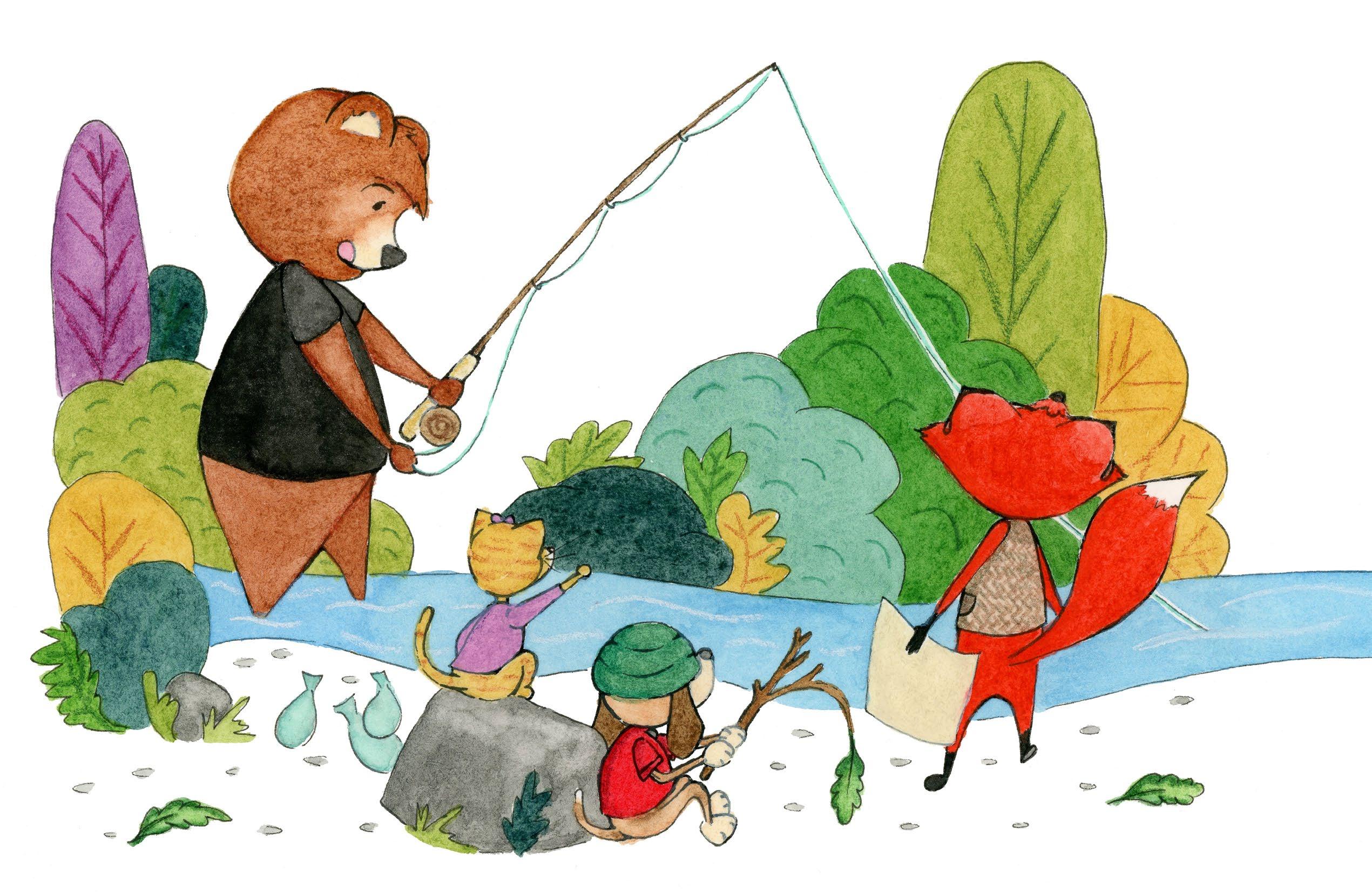
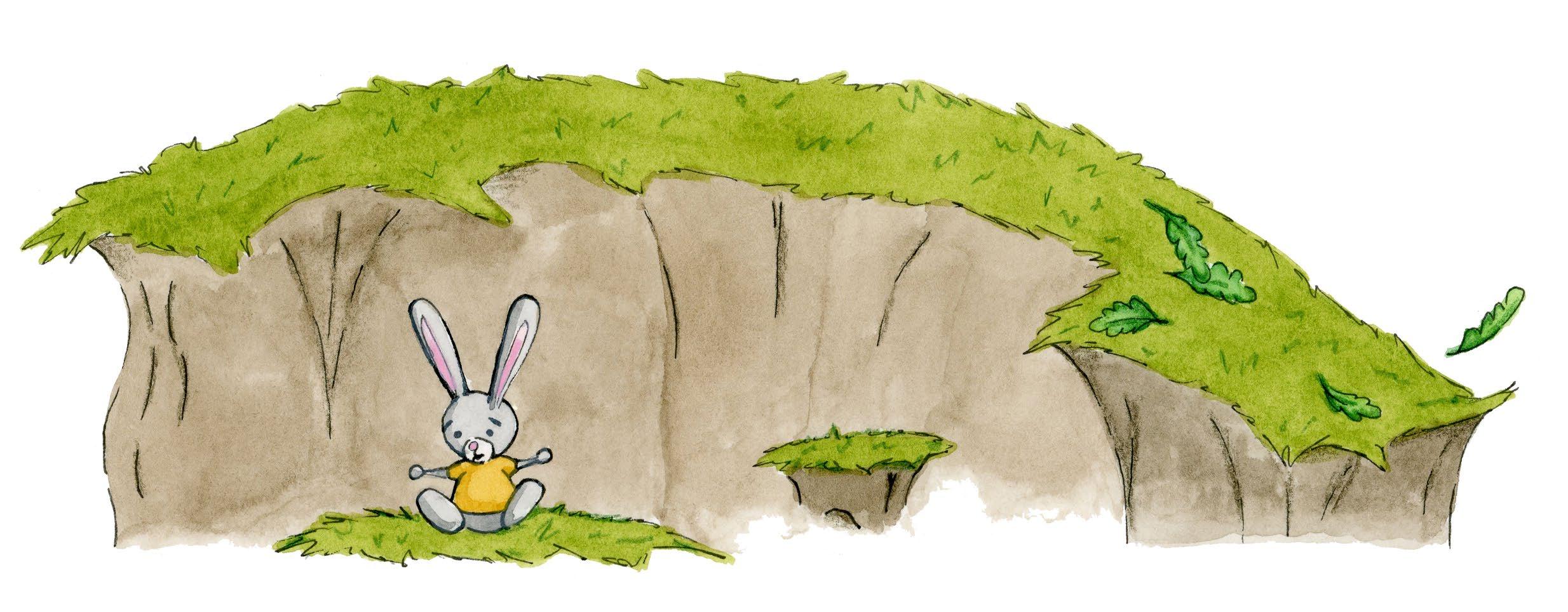
Fox’s eyes were already scanning the cliff and figuring out a rescue plan. Bear was waistdeep in the river water, trying to scale the cliff, but he couldn’t.
Kit called out to the friends, “Hey! Get over here and let’s work together.” All of them ran over to her. “Okay, Fox, what is your plan? What do we need to do?”
Fox paused for a moment, and then his eyes lit up and he began speaking very quickly. “Doggy, you need to stay down here with me and be as encouraging as you possibly can. Bear, find a large tree branch, break it off, and go up the river to the bridge and cross over to the cliff side with Kit. Kit, Bear is going to lower you down on the branch and you will use your mighty teeth on the back of the bunny’s thick neck as Bear pulls you both back up.”
The forest friends went right to work. Doggy started shouting out encouragement while Bear and Kit grabbed a branch and ran downriver to cross and get to Bunny, who was still shivering and softly crying on the ledge.
Fox watched with steady eyes as Bear and Kit appeared again at the top of the cliff above Bunny. “Okay! Now lower the branch with Kit slowly. A little to the right! Now a little to the left! A little bit more! There! Stop!”
Bear stopped lowering the branch, Kit at the end of it digging in with her claws. Bunny looked up and saw Kit’s soft, kind eyes and heard Doggy barking, “You’re gonna be okay!” Bunny started to smile.

“Can you lower me down a little bit more?” Kit yelled up to Bear.
“No can do, Kit,” Bear said, his arm already fully extended down, gripping the tree branch with all his strength.
Fox yelled up to Kit, “There’s another ledge just to your left. Try jumping there and then jumping to Bunny.” Kit did it, almost slipping on the second jump.
“Now carefully bring Bunny up to the other ledge and across to the branch.”
Doggy stopped barking and watched with his mouth open. Fox put his paw on Doggy’s back as Kit, with Bunny hanging from her mouth, navigated to the first ledge and then the next.
“Careful, Kit! Be so careful!” Fox shouted one more time as Kit took a deep breath and jumped from the ledge to the branch.
Doggy closed his eyes. Fox closed his eyes. Bear closed his eyes. Kit closed her eyes and sunk her claws into the branch the moment she felt it.
“Hooray!!” Fox shouted as he looked up. The rest of them joined in, and Kit proudly climbed back up the branch with the bunny to safety.
Bear put Kit and the bunny on his back and ran back to the bridge, across the river, and toward Fox and Doggy. Bear ran so fast he almost ran past Doggy and Fox. “Bear!” Kit shouted. “Slow down!”
Bears aren’t very good at slowing down, so he dug his feet into the ground and skid into a bush beside the river. Fox and Doggy ran up behind them and helped Kit and Bunny out of the bush, forgetting Bear was still in it.
Doggy licked Kit and then licked the bunny. “I’m so happy you’re okay. So happy, so happy, so happy.” As he spoke, he ran around them in circles, barking.



Bunny looked at Fox and Doggy and Kit and Bear, who’d finally got himself out of the bush. “I don’t know how to thank you,” the bunny said, tearing up. “I was so scared and I didn’t know if I would ever get down. I was just bouncing along, like bunnies do, and I forgot about the cliff and just bounced off. Oh, I was so scared.”
Fox spoke up. “No need to thank us. We are glad to help!”
All the forest friends gave Bunny a hug and Bear tried to give her a fish, but she just smiled and waved as she bounced away to her burrow.
“You looked so scared, Kit. Way to be brave!” Bear said.
“I was not scared! I’m offended that you would…cough, cough, caaaack!…Sorry, hairball!” Kit smiled with embarrassment as the rest of the forest friends laughed.
“Well, I think that’s enough adventure for one day,” Fox said. “Let’s head home.”

Back home, Bear made fish while Fox played a song on his guitar. Doggy and Kit danced and sang around the fire before they all ate a delicious fish feast. As the fire died down and the yawns started spreading among them, they all began walking into the cave under the roots of the giant oak tree.
Bear lay down first, and then Fox, and then Doggy, and then Kit. Each one of them snuggling in and slowly blinking their eyes. As Kit started to fall asleep, she asked, “Fox, can you tell us a story?”
“Of course, Kit,” Fox said. “In the middle of the forest, in a cave under the roots of a giant oak tree, lived four forest friends…”

Fox continued to tell of their adventures as each of them fell asleep. By the time Fox got to the end, he could barely say the last sentence before he closed his eyes and fell asleep himself.
Outside, the moon hung and sent silver streams of glistening light through the leaves, and the wind blew through the tall branches, singing a natural lullaby throughout the peaceful night as the forest friends slept, resting for another day of great adventures.


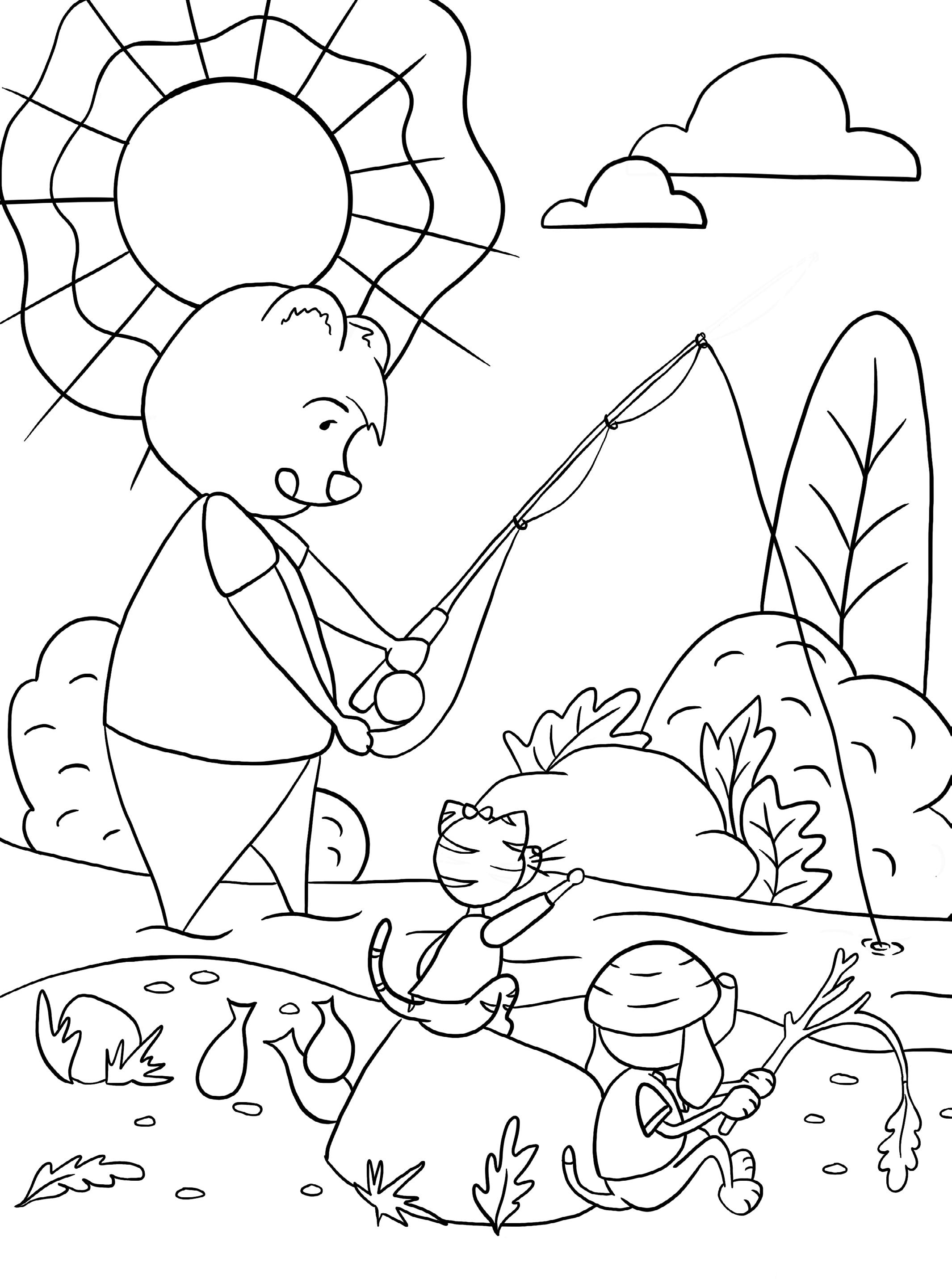
Did you know that you can travel the world, explore the galaxy, and go back in time without ever leaving your room? When you write a story, you can go anywhere! As a fellow Lightcatcher, you are already imagining a great adventure. Here are a few prompts to get your story going.

In order to save your family, you must retrieve the magical light of Landriel on the other side of the Forest of Darkness. Will you get the light and make it back in time? Write a story of your adventure!
Most nights when you go to bed, you lay your head on your pillow, pull up your covers, and fall asleep. But tonight is not most nights. The moment you lay your head on your pillow, your bed transforms into a spaceship ready to launch! When you hear a voice come over the radio asking for help, you fasten your seatbelt and press the red button. What happens next? Do you find and help whoever is calling you?
Life is tough on a peach farm, especially if you’re a peach. What happens when the peach picker comes looking for you and your family? Do you run or become a pie like your ancestors? Tell the story of the peach’s brave escape!
If you don’t like these prompts, that’s okay. You don’t need these to write a great story. You’re a Lightcatcher. The story is already in you!
We want to read the stories you write. Talk to your grown-up and have them email us your story at hello@bealightcatcher.com for a chance to be featured in an upcoming issue.

Bunny was so grateful that her new friends came to her rescue that she brought them a jar of her grandbunny’s famous wild-grape jelly. Doggy wanted to open it and lick it right out of the jar, but Fox talked him into giving it to Bear so he could whip up one of their favorite treats: Peanut Butter and Jelly Cookies! With just four ingredients, you can bake these cookies with Bear in your own kitchen.
INGREDIENTS
• 1 cup peanut butter (or any nut butter you like)
• 1 cup sugar
• 1 large egg
• Jam or jelly of your choice TOOLS
• Bowls, one large, one small
• Measuring cups and spoons
• Wooden spoon
• Baking sheet
• Parchment paper
• Cooling rack or plate
• Spatula
1. Preheat the oven to 350 degrees Fahrenheit. Line the baking sheet with parchment paper.

2. Crack the egg into the small bowl. Bear usually asks Fox to do this because his small hands are gentle and don’t get eggshell in the bowl.
3. Mix together the peanut butter and sugar in the large bowl. Then add the egg and mix until smooth. Bear likes to do a little dance while he stirs.
4. With clean paws, roll a tablespoon-size scoop of dough into a ball.
5. Place the dough balls on the baking sheet two inches apart.
6. Use your thumb to make a small indentation in the middle of each dough ball. Bear asks Kit to do this part because her paws are just the right size.
7. Bake for 6–8 minutes, until the edges of the cookies are golden brown.
8. Let the cookies cool on the baking sheet for 5 minutes and then move them on to a cooling rack or plate to cool for another 5 minutes. Bear has to keep a close eye on Doggy so he doesn’t eat them yet.
9. Once cool, spoon a dollop of your favorite jelly or jam into the center of each cookie.
10. Enjoy your cookies with a big, cold glass of milk and the Forest Friends.
Why do you park on a driveway and drive on a parkway?
What was your favorite snack growing up?
If you were stranded on a desert island, what book do you hope you have with you?
When did you decide to do the work you are doing?
What is your least favorite song to get stuck in your head?
What is one food you thought was gross as a kid that you enjoy eating now?
Can I have a snack?
Is that song stuck in your head right now?
Can you tell me a story about a time God came through for you?
If you could spend a whole day of free time with me, what would we do?
Kit loves a good craft project! Today she’s making a leaf garland to decorate the cave. Cut out the leaf shapes and trace them onto construction paper. Then cut out as many leaves as you like. You can color or decorate them with paint or glitter. (Ask your grown-up first!) Then, use a hole punch to make a hole in the top of each leaf. String a piece of twine or yarn through the holes in the leaves. You can tie a knot between each leaf if you want to keep them in place on the string. Use your leaf garland to brighten up your bedroom or a special place in your cave.
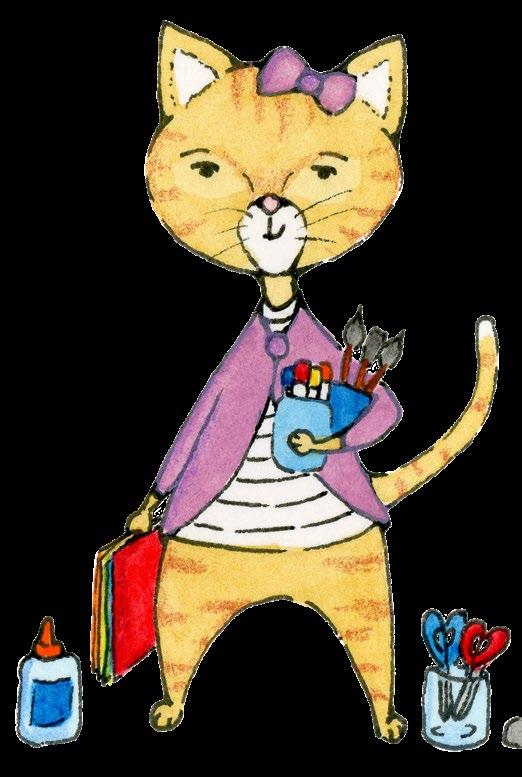
A

Copyright © 2024 Grace Based Families